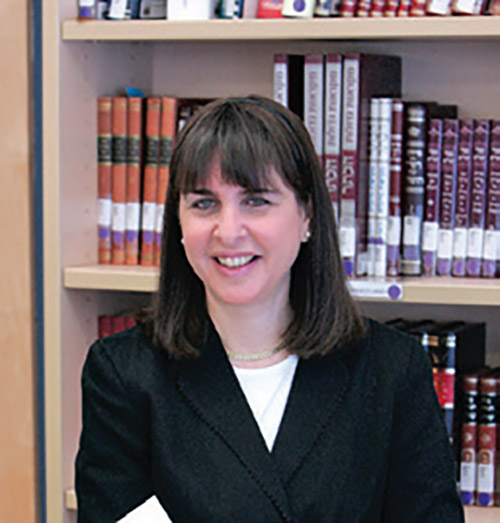
Editor’s note: This text is excerpted from Dean Rachel Friedman’s speech at Lamdeinu’s Yom Ha’atzmaut Celebration.
On this 70th birthday of Medinat Yisrael, I have been reflecting on the two greatest historical forces in my own life as a Jewish woman: the establishment and existence of the State of Israel as a homeland for am Yisrael, and the rise of deep and serious Torah study by women. I believe that these two historical movements are very much related to each other.
It is very striking to me that the Hebrew word morasha—heritage, inheritance or legacy—appears only two times in the Torah. One is in Sefer Devarim 33:4 in Moshe’s farewell speech to am Yisrael, and it is one of the very first songs that we teach our children:
“Torah tzivah lanu Moshe; morasha kehillat Yaakov.”
Morashah, here, refers to our precious teachings—the written teachings of Moshe Rabbeinu and the Oral Torah that guides our lives.
The other place in the Chumash, however, in which the word morasha appears, it refers to something different. There, in Shemot 6:6-8, God commands Moshe to convey a crucial message to the despairing slaves:
6… I will bring you out (vehotzeiti) from under the burdens of the Egyptians, and I will deliver you (vehitzalti) from their bondage and I will redeem you (vega’alti) with an outstretched arm and with great judgments;
- 7. And I will take you (velakachti) to Me for a people, and I will be to you (vehayiti) a God, and you shall know (veyadatem) that I am the LORD your God….
- 8. And I will bring you (veheveti) unto the land, … and I will give it to you (venatati) for a heritage (morasha): I am the Lord.
This passage contains our keyword, morasha. Interestingly, however, here the word refers not to the Torah, but to the Land of Israel.
This group of verses also happens to be the basis for one of my favorite interpretations by the great teacher Nechama Leibowitz, z”l. Nechama, as she liked to be called, comments that this passage describes three distinct aspects of the redemption of am Yisrael. The first three (vehotzeiti, vehitzalti, vega’alti) refer to the salvation from Egypt; the next two refer to revelation and matan Torah (velakachti, vehayiti); and the final two (veheveti, venatati) refer to our inheritance of the Land of Israel as a morasha. In Nechama’s view, God promises that after the Exodus and Matan Torah the nation of Israel will “know” God because they will have just experienced His compassionate salvation from Egypt and entered into a bond of eternity with Him at Sinai. At this juncture, God promises, am Yisrael will enter the Land of Israel and will inherit it as a morasha.
I believe that Nechama Leibowitz, a talmida chachama, a survivor of the Shoah, a pioneer in Jewish education throughout the world and for all time, is conveying to us a real and compelling truth. As religious Zionists, we seek an ideal combination of Torah observance and of making the Land of Israel our spiritual and physical home. But this takes time. The reality today is that the Land of Israel is home to Jews of many different stripes who live together, thrive together, give together and build together. We are in the era of reishit tzemichat geulateinu; we aspire to a time when Torah and Eretz Yisrael are synonymous for all Jews.
Nechama Leibowitz, in her wisdom and sensitivity, realized that the parallel and overlapping ideals of Torah and Eretz Yisrael, each uniquely called a morasha, could only be achieved with time and through widespread Torah study. To quote from Yael Unterman’s biography, “Nehama Leibowitz, Teacher and Bible Scholar” (p. 37):
“Nehama’s life work was, in part, a rebuilding after the destruction wreaked by the Holocaust….Her primary focus was on textual study and on ethical, Godly living, and not on persecutions past. History had its place, but the Tanach, an eternal, living work, held the Jewish future…Better that Jewish life be strengthened through Torah learning…”
Let me return to where I began. If you woke me up in the middle of the night and asked me what historical forces have most deeply affected my spiritual life, my answer would most certainly be: the establishment of the State of Israel and the growing role that women’s Torah study plays in Jewish society. I am therefore exceedingly grateful to Dr. Nechama Leibowitz for connecting the dots and emphasizing that these two dynamic forces are intimately intertwined. Nechama Leibowitz embodied in her character, work and very being the twin values that make our era so unique in Jewish history—torat nashim and hakamat Medinat Yisrael. To quote Yael Unterman one final time:
“During her lifetime, Nehama succeeded in teaching Torah via three different media. Two were familiar and time-tested—teaching and writing books and articles—but the third was unique to Nehama: her famous mimeographed pages of questions, that she called gilyonot, on the weekly Torah portion. With these gilyonot, Nehama inverted a centuries-old Jewish practice. Since Talmudic times, Jews have corresponded on matters of Jewish law with the greatest halachic decisors of their day, sending queries by mail across considerable distances, and receiving detailed replies… but Nehama did the reverse: she sent out the questions, and correspondents were the ones who wrote the responses! In doing so, she helped to restore the holy land to its rightful place as the central address for the Torah’s dissemination across the world.”
Torah study for and by women was not born on the fifth day of Iyar in 1948. But the flourishing State of Israel has nourished and nurtured the rise of torat nashim. Indeed, Medinat Yisrael provides a center from which Torah for men and women radiates, fulfilling the words of Yeshayahu
“Ki mi-Tziyon teitzei Torah, u-devar Hashem mi-Yerushalayim.”
By Rachel Friedman,
Dean, Lamdeinu













